ESASky goes multi-messenger!
This new release extends the multi-messenger feature to serve gravitational wave events and neutrino events, adds new data and exciting new functionalities.

If you plan to use data from ESA's science missions in your research, why not visit us to learn more about those data and missions? The Archival Research Visitor Programme is an excellent opportunity to pursue research projects based on data publicly available in the ESA Space Science Archives. The programme is open to all scientists affiliated with institutes in ESA Member States and Collaborating States. Early-career scientists and PhD students are particularly encouraged to apply.
During your stay, you will have access to archives and mission specialists for help with the retrieval, calibration, and analysis of archival data. In principle, all areas of space research covered by ESA science missions can be supported. Residence lasts typically between one and three months, also distributed over multiple visits. Research projects can be carried out at ESAC (Madrid, Spain) and at ESTEC (Noordwijk, Netherlands). ESA will cover travel costs from your home institution and will provide support for lodging expenses and meals.
There are two calls for application per year. Applications received before 1 May 2022 will be considered for visits in autumn 2022 and winter 2023. For further details, including areas of research and contact information, please refer to the Archival Research Visitor Programme webpage. We are looking forward to receiving your proposals!
Images: ESA
This new release extends the multi-messenger feature to serve gravitational wave events and neutrino events, adds new data and exciting new functionalities.
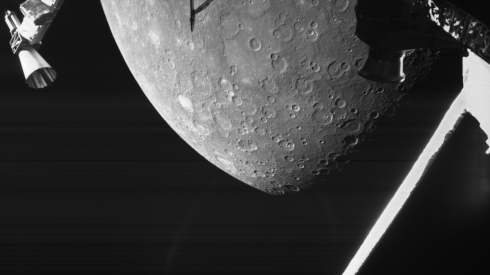
All images of BepiColombo's first flyby of Mercury are available in the Planetary Science Archive.

The latest serendipitous source catalogues have been included in the XMM-Newton Science Archive.

The latest products available in the archive are from HERUS, PPDISKS2 and GASPS_YSO.
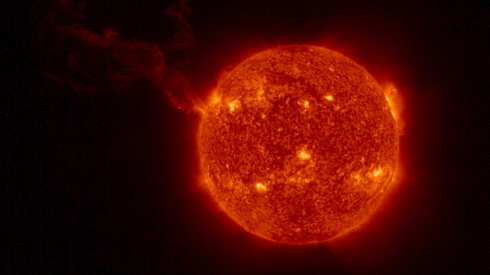
A new version of the Solar Orbiter ARchive (SOAR) was released in November, ready to ingest science data from all experiments.

The Human and Robotic Exploration Data Archive (HREDA) is evolving to become the central entry point for retrieving all data hosted in the Erasmus Experiment Archive.
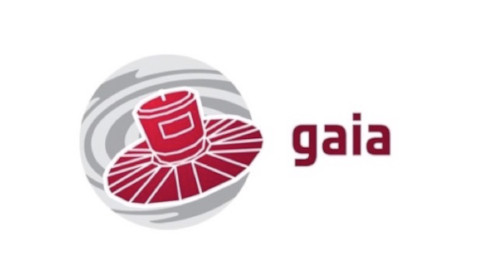
A detailed analysis of more than 46 million queries to the Gaia ESA archive has just started.
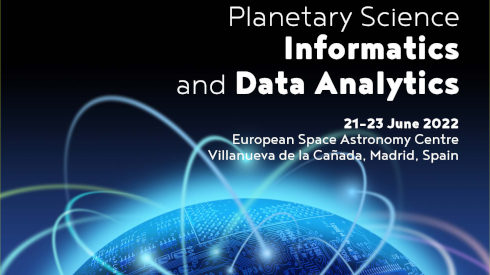
We are pleased to invite you to join us at ESAC, Spain on 21-23 June 2022 to discuss current topics in planetary science informatics and data analytics.

We are happy to announce the latest release of ESASky on 22 March 2022. This new version extends the multi-messenger features of the tool, adds new data and exciting new functionalities.
The new multi-messenger feature was released in October 2021 to show gravitational wave (GW) event probability maps on the sky from the LIGO-Virgo-KAGRA collaboration’s 3rd observing run. This latest release in March adds neutrino events from the IceCube Neutrino Observatory, shows the neutrino probability footprint on the sky and updates as soon as possible when a new event is reported. The aim of the new feature is to allow users to look for the electromagnetic counterparts of the events and quickly access all available archival electromagnetic data in ESASky. With this aim in mind, a number of high energy and extragalactic catalogues have been added to ESASky, including the Second ROSAT All-Sky Survey Point Source Catalogue, the
Fermi-LAT 10-year source catalogue and the Open Universe for Blazars catalogue. Future releases will expand the multi-messenger feature to include all previous GW observing runs, include more extragalactic catalogues and to prepare for the LIGO-Virgo-KAGRA collaboration’s 4th observing run, currently due to start towards the end of 2022.
More new science ready data has been added in the past two releases to include all public observational metadata and light curves from the
CHEOPS mission and skies maps (HiPS) from PanSTARRS and ASTRON (the Netherlands Institute for Radio Astronomy). And the external Table Access Protocol (TAP) service has been expanded too, complementing the access to the
European Southern Observatory (ESO), the Canadian Astronomy Data Centre (CADC) and the Mikulski Archive for Space Telescopes (MAST) data with the access to ASTRON and the High Energy Astrophysics Science Archive Research Center (HEASARC) master catalogues.
Exciting new features asked for by our users have also been added to the tool. It is now possible to save a session of ESASky and go back to it at a later time or send it to collaborators to open. Features that are saved include the data loaded, filters applied to the data, background skies, publications and the planning tool. It is also now possible to search in the sky for observations and catalogues that lie within a cone, box or polygon. And users can include any sky (HiPS) from a URL, local computer or by browsing the CDS HiPS list for globally available HiPS.
Finally, in collaboration with the ESA/Hubble team, ESASky now provides access to the Hubble outreach images on the ESA/Hubble website. Users can tour the Hubble outreach images overlaid on the sky, read the explanation about each image and link to the appropriate ESA/Hubble outreach image page.
Images: ESA/ESDC
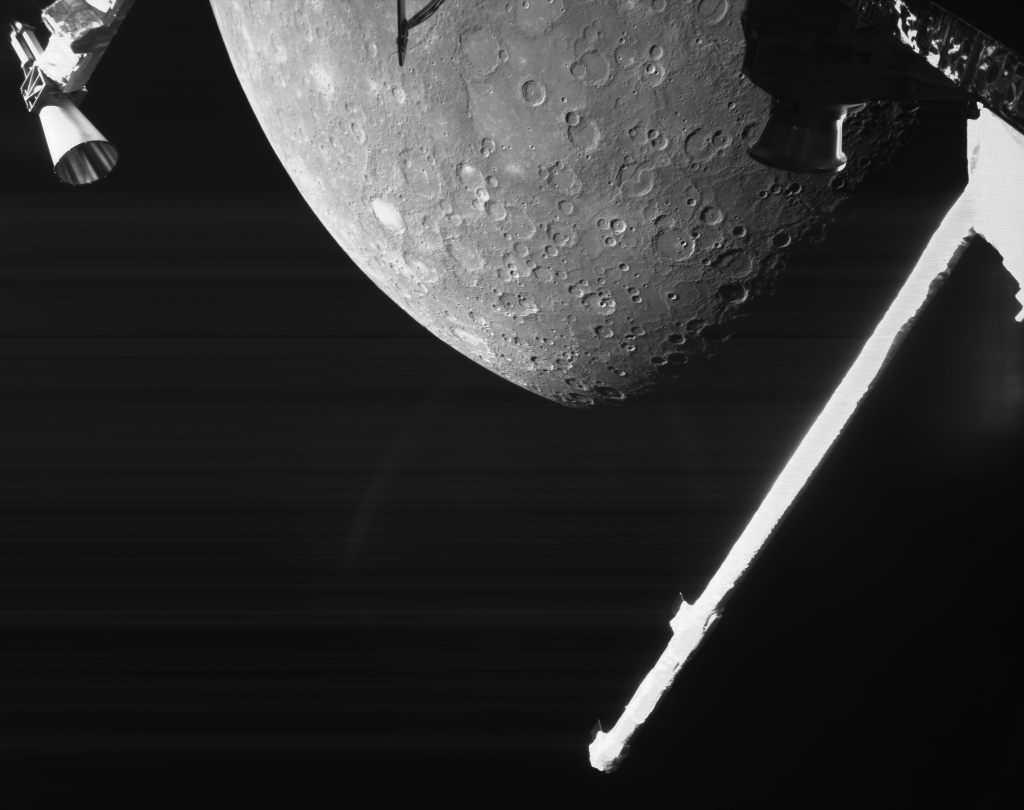
The ESA/JAXA BepiColombo mission caught its first glimpse of its
destination in October 2021 in the first of a series of six flybys of
Mercury. In its cruise configuration, the mission comprises three
spacecraft elements - the ESA Mercury Planetary Orbiter (MPO), the JAXA
Mercury Magnetospheric Orbiter (MMO, also known as Mio) and the Mercury
Transfer Module (MTM). During the seven year journey to the innermost
planet, many of the scientific instruments are protected inside the
spacecraft stack and cannot easily be operated. Fortunately, however,
Bepi can keep an eye on itself and record its epic journey via 3
monitoring cameras (MCAMs).
The BepiColombo mission is providing images from the MCAMs to the
Planetary Science Archive (PSA) almost as soon as they are received on
ground. Usually the images are kept private for a week or so until they
have been checked for any glitches, but for the flybys the archive
advanced the schedule to make them available as soon as possible.
All of the MCAM images are available in the archive, including those covering the flybys of Earth, Venus and Mercury. Sadly the cameras are attached to the MTM and we will lose them when the
spacecraft separate in 2025, but then we will have the full suite of
instruments to study Mercury. But before then we have another five
flybys of Mercury for you to enjoy!
Image: ESA & JAXA
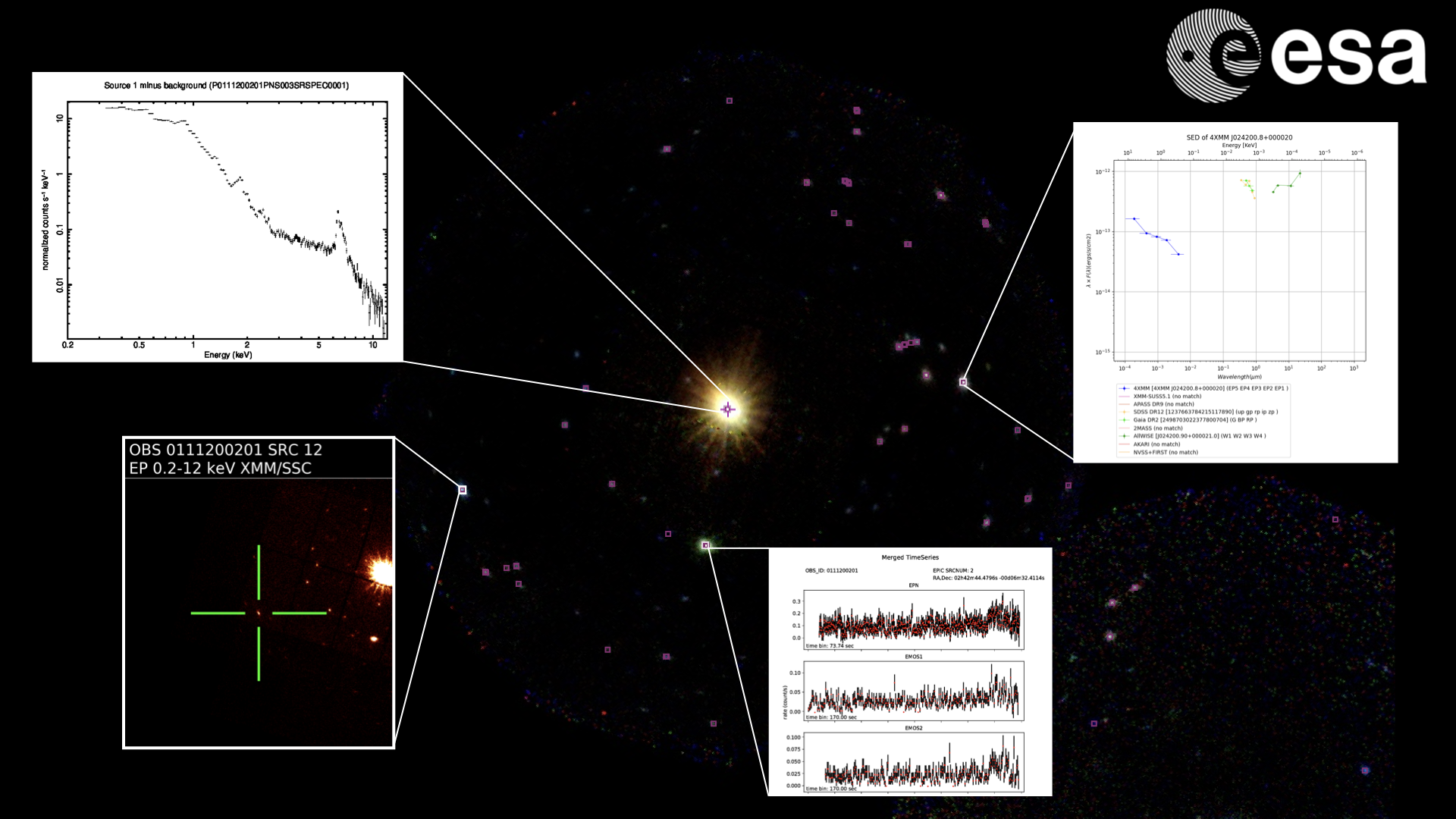
The latest serendipitous source catalogues, provided by the
XMM-Newton Survey Science Centre have been included in the XMM-Newton Science Archive (XSA) and ESASky: Data Release 11 of the Fourth XMM-Newton Serendipitous Source catalogue (4XMM-DR11), built from individual observations and the 4XMM-DR11s EPIC Stacked catalogue built from overlapping observations to allow detection of even fainter objects. Based on one more year of data, the first catalogue now includes 895,415 detections, about 45,000 more than -DR10, relating to 602,543 individual sources; the second catalogue contains 358,809 unique sources, almost 23,000 more than the previous version. SED images, finding charts, lightcurves and spectra from these catalogues, together with other data in the 0.2–12 keV energy band are available via the XSA web interface and the Table Access Protocol.
The above image displays the ESASky view of the active galaxy NGC1068 XMM-Newton observations. Brightest sources from the 4XMM-DR11 catalogue and several scientific products are also shown in the picture.
Image: ESA/ESDC
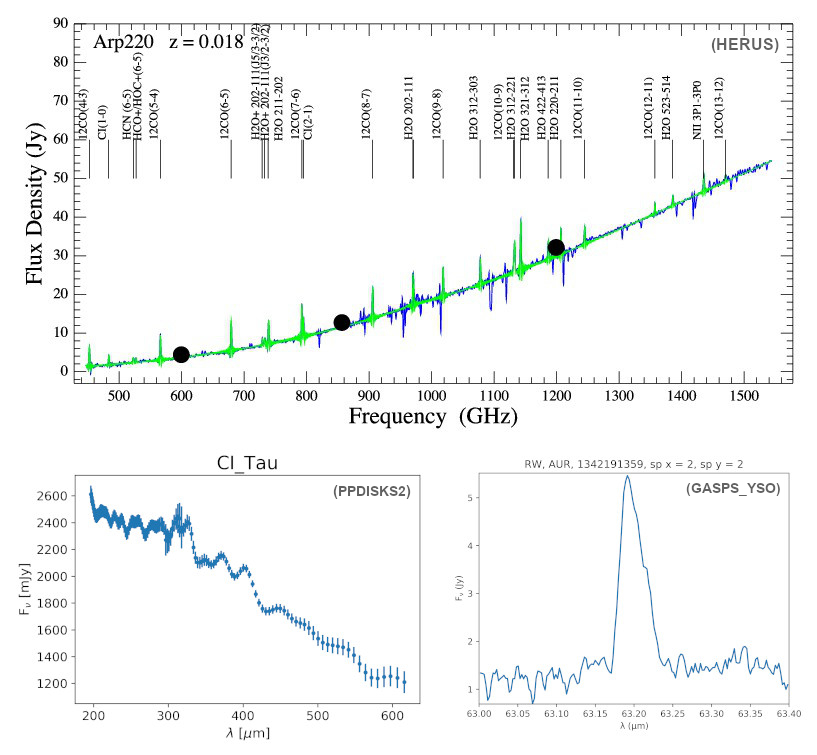
Three new User Provided Data Products (UPDPs; data products generated by the scientific community) have been ingested in the
Herschel Science Archive:
HERUS: Full range, interactively reduced SPIRE spectra of 42 ULIRGs are provided, complemented with photometry in the SPIRE bands at 250, 350, and 500 microns. The spectra include near complete CO ladders for over half of the sample, as well as fine structure lines from [CI] 370 microns, [CI] 609 microns, and [NII] 205 microns. H2O lines are also detected in several objects.
PPDISKS2: SPIRE-FTS spectra of 34 sources located within the star-forming clouds of Taurus, Chamaeleon, and Ophiuchus (see Ribas et al. 2017). They represent a subset of a total of 113 SPIRE-FTS observations of protoplanetary disks in these regions for which a careful interactive analysis was performed.
GASPS_YSO: PACS spectroscopic observations at 63 microns of 362 YSOs covering all evolutionary stages, from Class 0 protostars to Class III stars with debris discs. In addition to the interactively reduced spectroscopic data, a catalogue of line and continuum fluxes from the central spaxel and from coadding the 3x3 and 5x5 central spaxels (only for the [OI] line) are provided.
The full list of UPDPs currently ingested in the Herschel Science Archive is available online. The ingestion of UPDPs is a combined effort of the remaining very limited resources from the former ESAC Herschel Science Centre plus the ESAC Science Data Centre team. Henceforth, this is an activity for which we cannot ensure continuity although the ingestion of already provided data products is foreseen at best effort basis.
Image: ESA/Herschel SOC
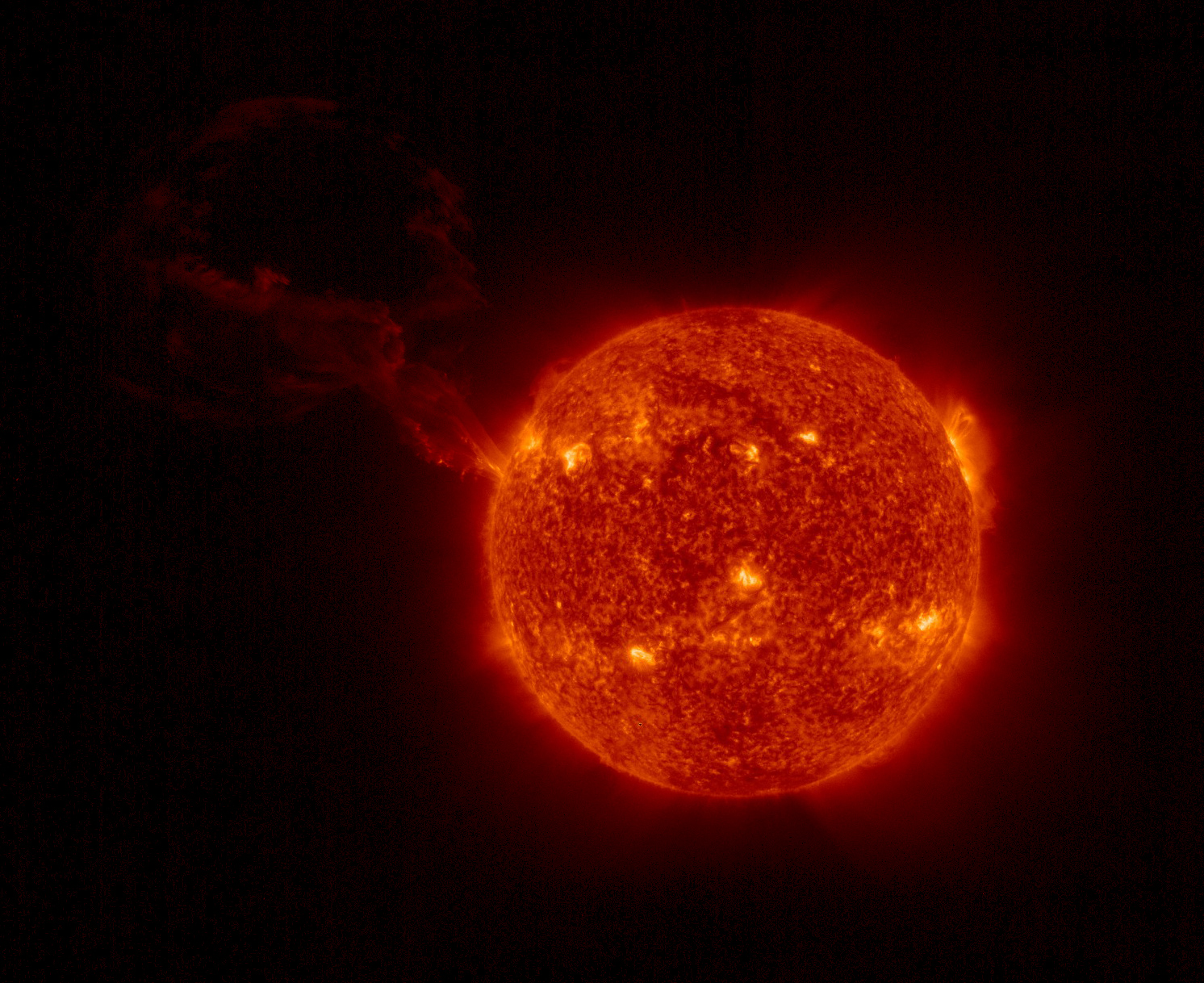
Solar Orbiter has now started its nominal mission phase, after its successful Earth flyby on 26th November 2021. A new version of the Solar Orbiter ARchive (SOAR) was released to coincide with this milestone, ready to ingest science data from all 10 experiments. Calibrated data from all four in-situ instruments are now available, plus those from two remote sensing instruments: the Extreme Ultraviolet Imager (EUI) and the Spectral Investigation of the Coronal Environment (SPICE), and data from the others will follow shortly. A system to automatically generate images as data comes in is now in place, and those images can be previewed and downloaded directly from the archive; this is already used for calibrated data from the EUI.
Image: Solar Orbiter/EUI Team/ESA & NASA
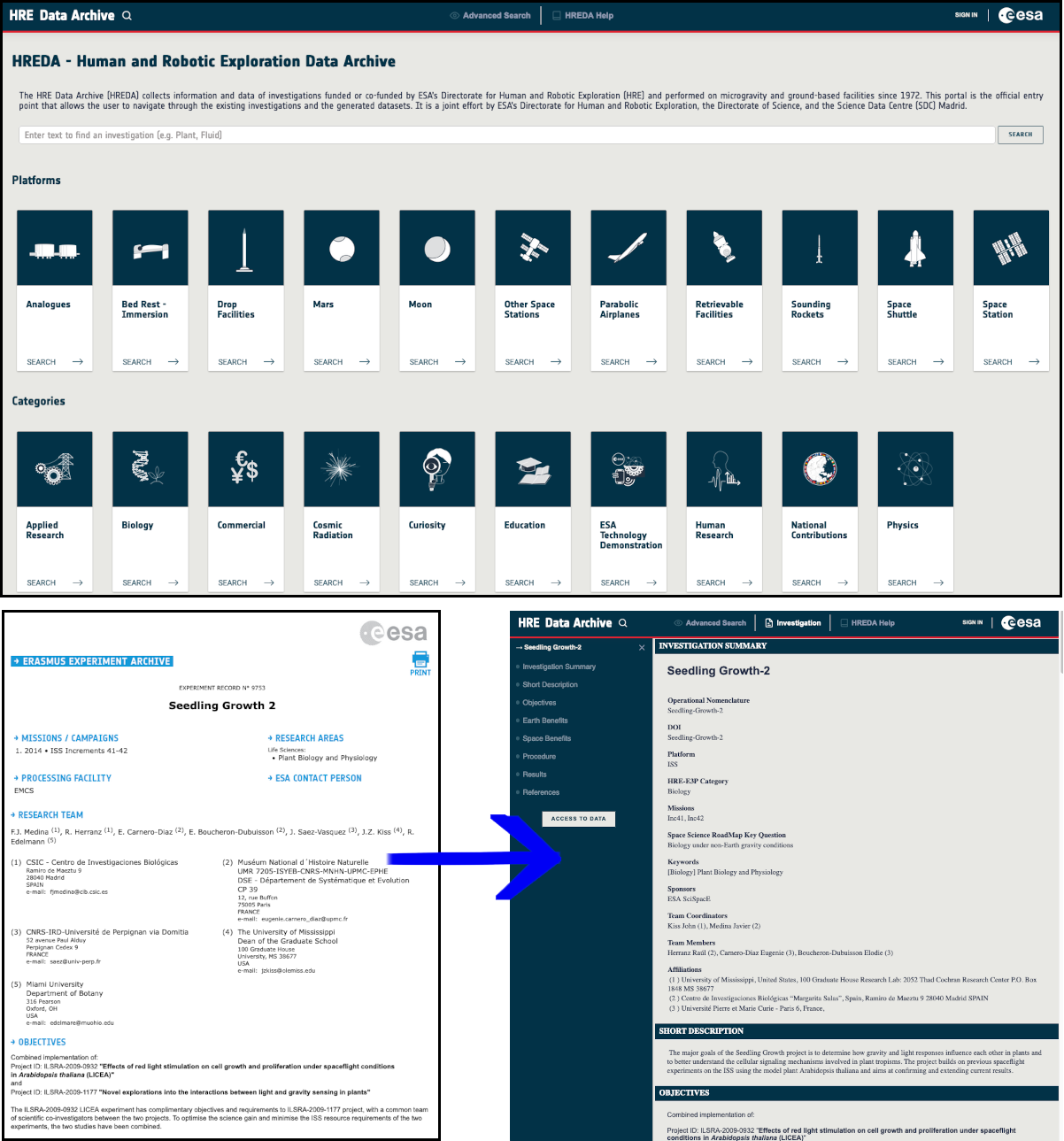
The content of the Human and Robotic Exploration Data Archive (HREDA) has continued to grow. It currently holds information about 34 investigations, 28 of them with data. HREDA’s data provider is the HRE Science Data Centre (SDC), at the Polytechnic University of Madrid. The SDC gathers the data from both the operations entities and the science teams and performs a very important task of curating the metadata of old investigations and setting up the standards for future investigations to ensure that no data is lost.
Version 2.1 of the HREDA was released in January 2022. Major changes in the web user interface have been done to improve the User Experience and getting closer to new ESA brand guidelines. This new version includes the “Investigation” page, whose content is populated per investigation to reflect the same information that is available in the Erasmus Experiment Archive (EEA).
Currently, the EEA has more than 4,000 records. Efforts are being made on the HRE side to curate this data prior to sending it to HREDA. Once the whole information stored in the EEA is transferred, HREDA will replace the EEA as the central entry point for retrieving data and descriptions of investigations.
Image: ESA/ESDC

With the Gaia mission being one of ESA’s power houses in terms of generating scientific results and publications, it is no surprise that the Gaia ESA Archive at ESDC is in popular demand. On average, the Archive receives more than 1 query per second around the clock defined in the Astronomical Data Query Language (ADQL).
With the aim to understand how astronomers use the Gaia Archive, such that we can improve it further following user demand, we have retrieved a set of 46,434,108 (anonymized) ADQL queries that have been submitted to the Gaia ESA Archive between 19 October 2020 and 9 December 2021. In addition to the actual text of the queries, this data set contains valuable information such as the query results size, the start and execution time, and the client used to connect to the Archive (e.g., Astroquery, TOPCAT, etc.).
A detailed analysis of this multi-dimensional data has just started, with the support of two trainees, but it is already clear from the accompanying figure that the data set contains much food for thought. The figure shows the execution time of each query (total_time, in units of milli-seconds, in logarithmic scale) versus the number of rows / objects resulting from the query (rows_number, also in logarithmic scale). Darker colours indicate more queries. The data show a wide variety of features (vertical stripes, horizontal stripes, parallel diagonal bands, blobs, etc.). Whereas some of these are expected, for instance the 3,000,000-rows limit for non-registered users and the 2-hour time-out limit for asynchronous queries, others demand a deeper analysis. Needless to say: we are very excited to continue our dive into this goldmine of information!
Images: ESA/ESDC
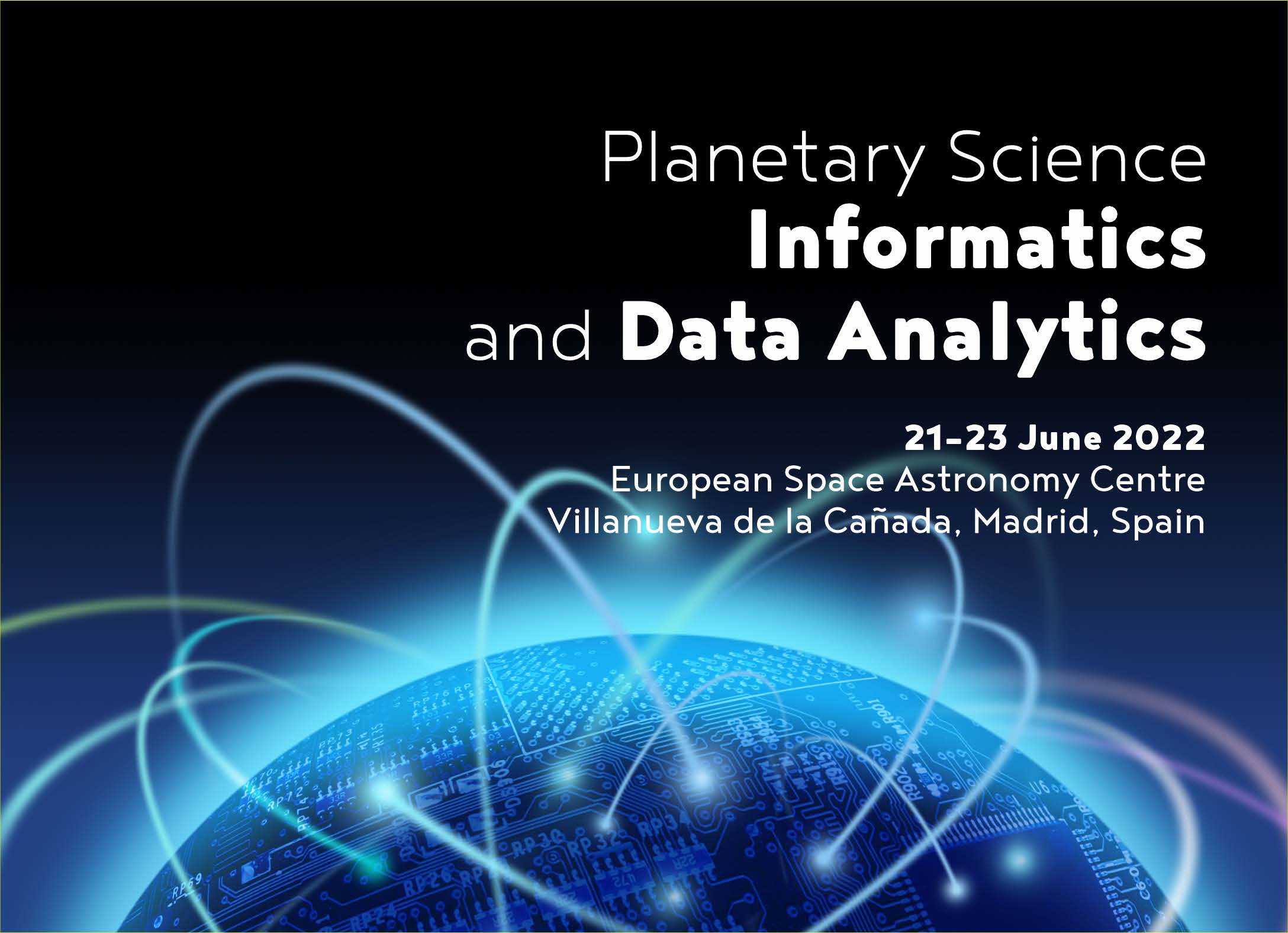
Following the success of the 1st edition of the Planetary Science Informatics and Data Analytics (PSIDA) conference in St Louis in 2018, and the joint conference with the Planetary Data Workshop in Flagstaff in 2021, we are pleased to invite you to join us at ESAC (European Space Astronomy Centre) in Villanueva de la Cañada, Spain on 21-23 June 2022 to discuss current topics in planetary science informatics and data analytics.
Tremendous growth in the volume and complexity of data returned from planetary exploration, coupled with new and emerging data science technologies, are changing planetary science. From better calibrations to enhanced modelling to new methods for data management and discovery, informatics and data analytics are an increasingly important part of understanding and processing data from planetary missions. As a result, it is becoming increasingly important for the planetary science and data science communities to work together to research and develop applications of these technologies to support upcoming mission and science needs.
The PSIDA conference provides a forum to discuss approaches, challenges, applications of informatics and data analytics technologies and capabilities in planetary science. During the three days of the conference, participants will have the opportunity to share knowledge, experience and lessons learned in these fields and network with colleagues.
At this stage (March 2022), we are planning to have an hybrid conference, with both face-to-face meetings on site and virtual participation. The situation is being carefully monitored and plans will be adapted if needed. The abstract submission deadline is approaching, please submit abstracts by 25th March 2022.
Images: ESA